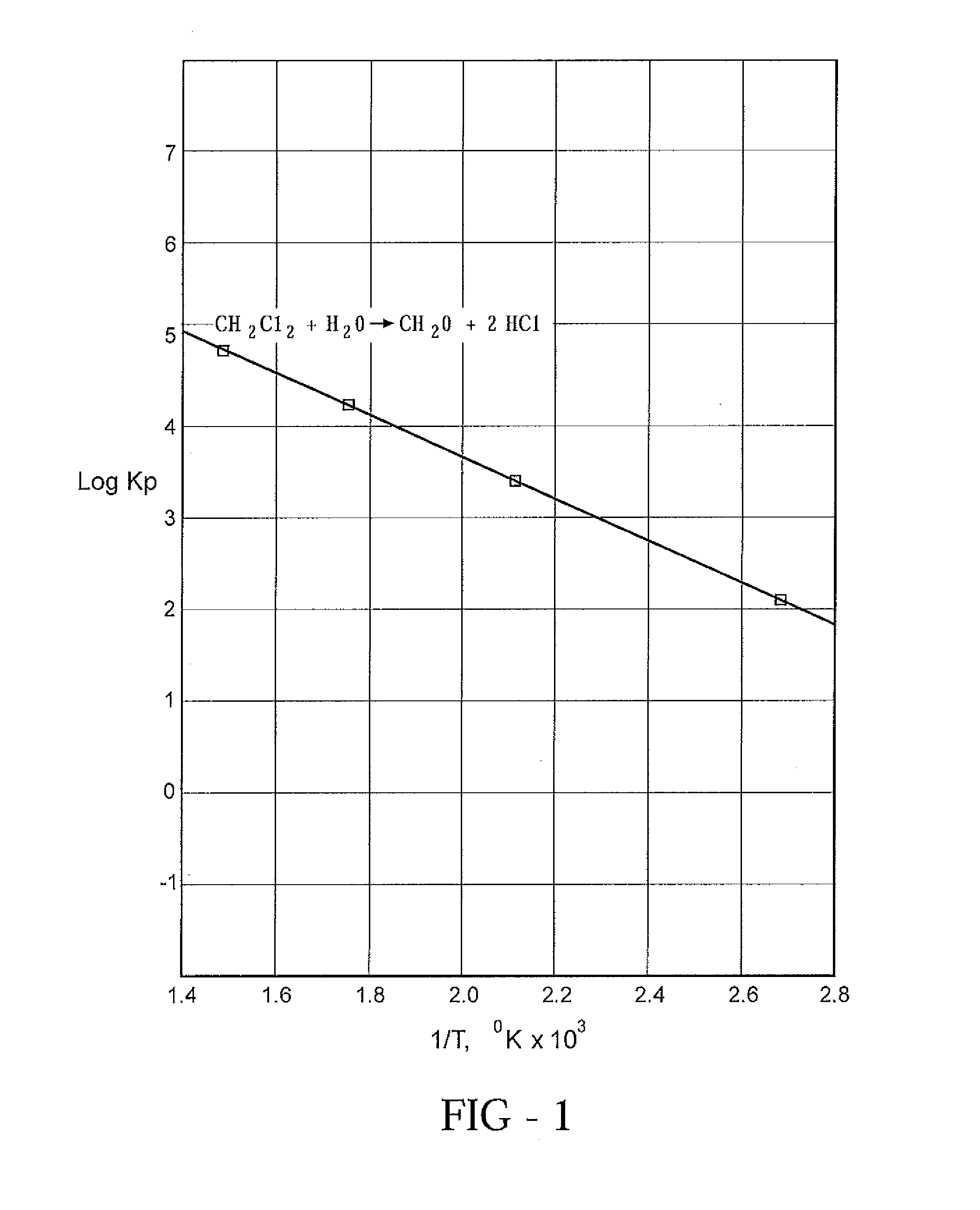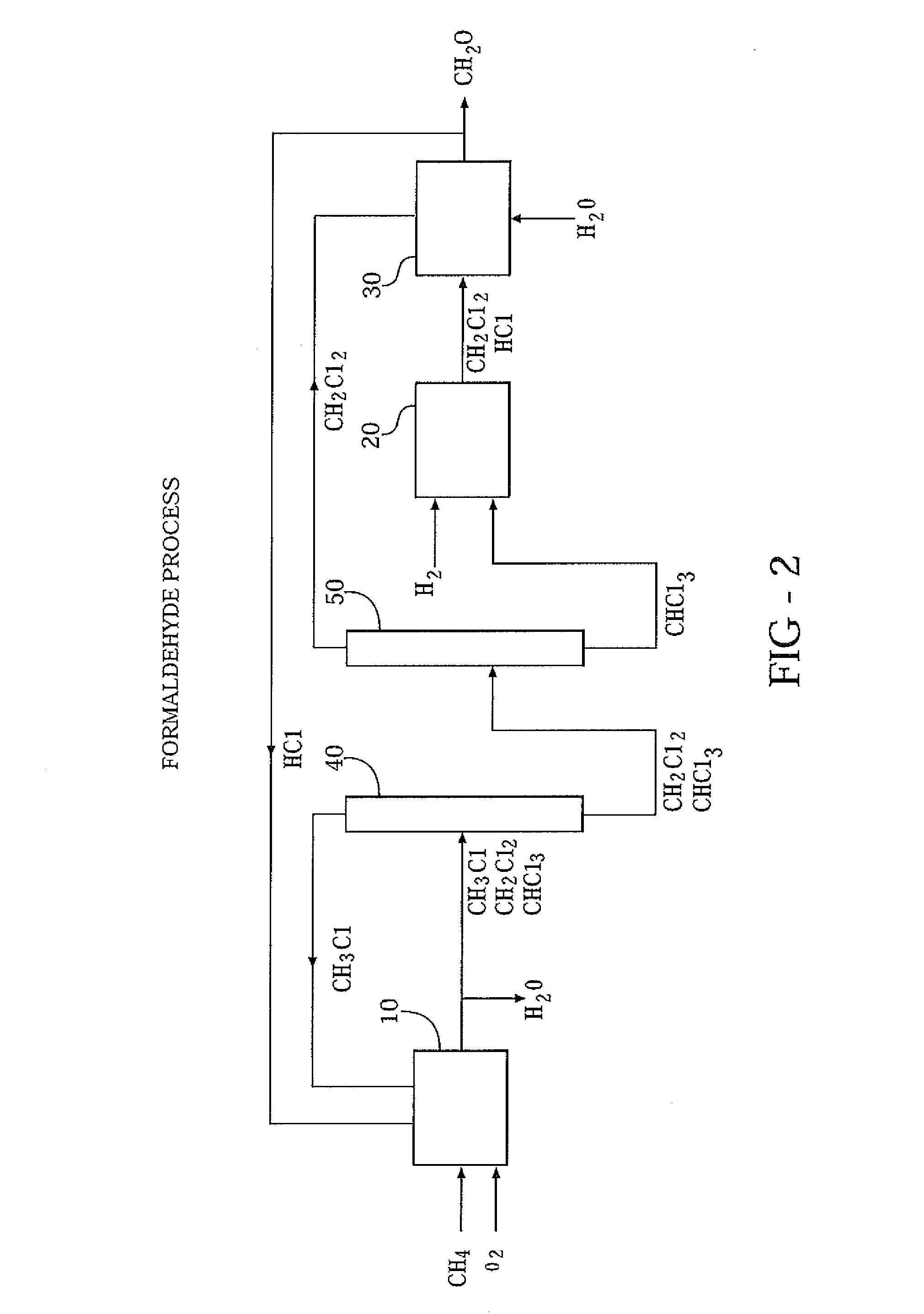Formaldehyde synthesis
a technology of formaldehyde and methane, which is applied in the field of formaldehyde synthesis, can solve the problems of difficult separation of complex mixtures of products
- Summary
- Abstract
- Description
- Claims
- Application Information
AI Technical Summary
Benefits of technology
Problems solved by technology
Method used
Image
Examples
Embodiment Construction
[0014]Three separate reactions, operated in tandem, are employed to convert methane to formaldehyde in high yields. By understanding the chemistry involved, a better appreciation of the merits of the process can be obtained.
[0015]The first reaction step, known as oxychlorination, achieves the chlorination of methane and recycled methyl chloride using as the source of chlorine. A catalyst is needed and can comprise a copper salt. Because of the poor reactivity of methane, a sufficiently high reaction temperature is required, usually in excess of 375° C.
[0016]The distribution of products from the first reaction step can be controlled only within broad ranges. Thus, although the object is to produce methylene chloride, inevitably some methyl chloride, chloroform and lesser quantities of carbon tetrachloride will be produced. In addition, some methane usually escapes unreacted.
[0017]Depending on market conditions, there may be a demand for the byproducts methyl chloride, chloroform and ...
PUM
 Login to View More
Login to View More Abstract
Description
Claims
Application Information
 Login to View More
Login to View More - R&D
- Intellectual Property
- Life Sciences
- Materials
- Tech Scout
- Unparalleled Data Quality
- Higher Quality Content
- 60% Fewer Hallucinations
Browse by: Latest US Patents, China's latest patents, Technical Efficacy Thesaurus, Application Domain, Technology Topic, Popular Technical Reports.
© 2025 PatSnap. All rights reserved.Legal|Privacy policy|Modern Slavery Act Transparency Statement|Sitemap|About US| Contact US: help@patsnap.com


